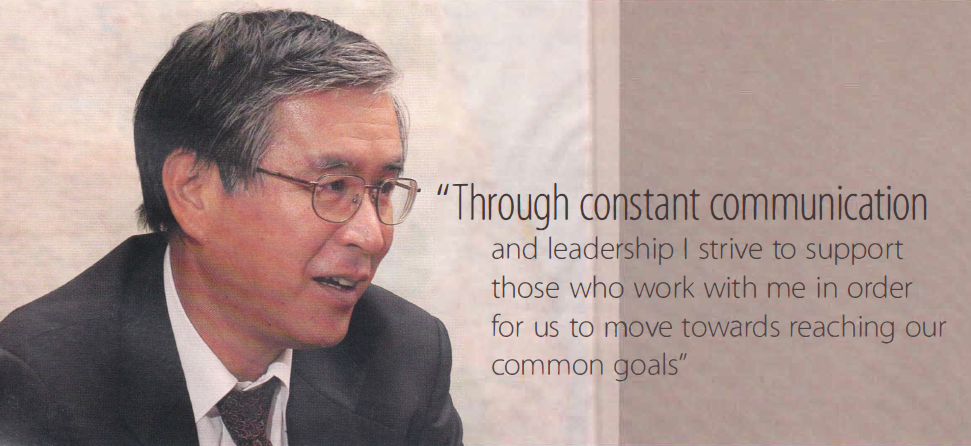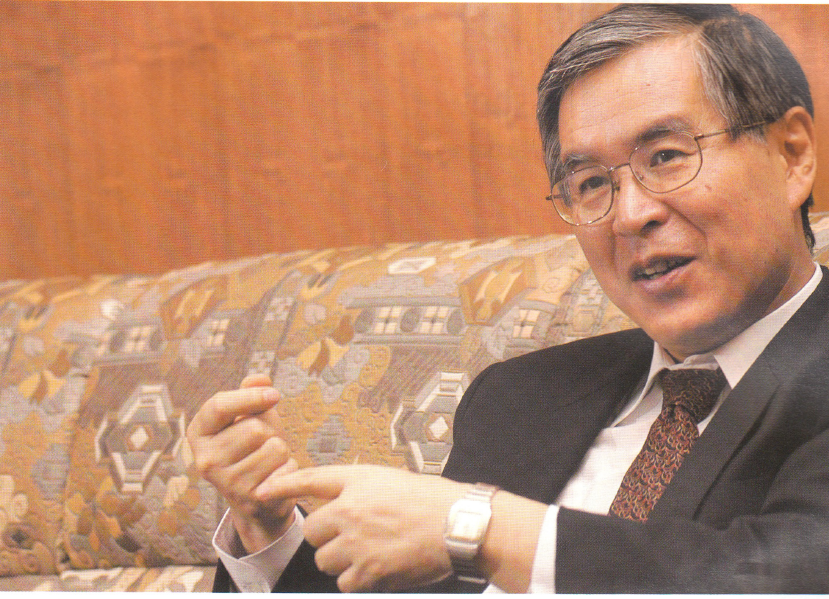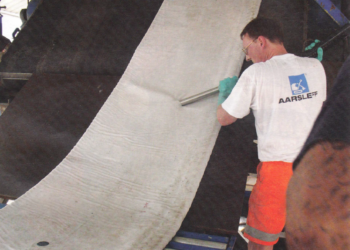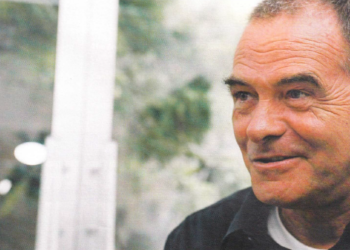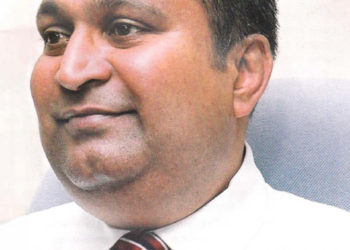By Keith Bernard. Assisted by Harin Fernando.
With a legacy dating back to 1858, Sri Lanka Telecom (SLT) is the country’s first telecommunications company. In 1996, SLT was incorporated as a public limited liability company and in 1997 the Nippon Telegraph and Telephone Corporation (NTT) of Japan collaborated with the government of Sri Lanka to privatise SLT.
Shuhei Anan, CEO and Director of SLT, tells Business Today of the trials and tribulations that lead to a profit after tax of Rs3 billion for the financial year 2005, an increase of 139% year on year and the highest ever post-privatisation. In 2002 SLT acquired mobile operator Mobitel. Such strategic investments have seen revenues from data-oriented and value added services result in record profitability. 2006 saw SLT become the first company incorporated in Sri Lanka to be awarded the BS 7799 / ISO 27001 certification for practices in information security. tells Business Today of the trials and tribulations that lead to a profit after tax of Rs3 billion for the financial year 2005, an increase of 139% year on year and the highest ever post-privatisation. In 2002 SLT acquired mobile operator Mobitel. Such strategic investments have seen revenues from data-oriented and value added services result in record profitability. 2006 saw SLT become the first company incorporated in Sri Lanka to be awarded the BS 7799 / ISO 27001 certification for practices in information security.
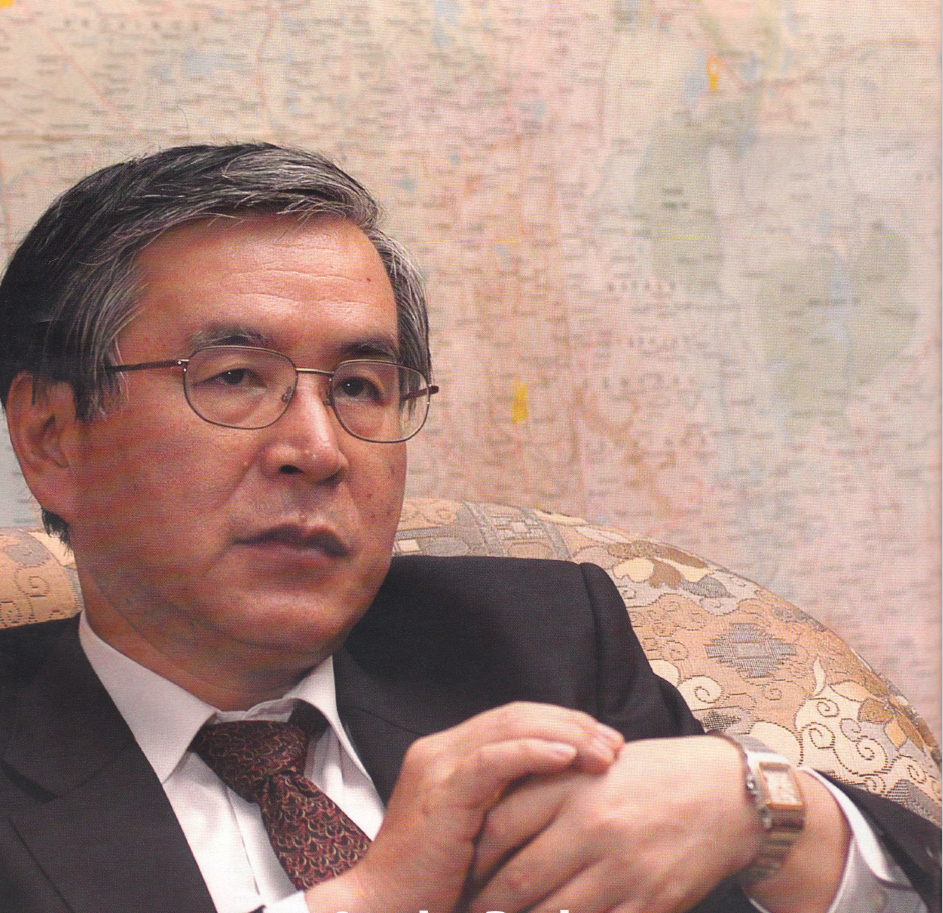
SLT is a company with a great deal of history. The last ten years in particular have seen dynamic changes that have lead to a testament to privatisation. How did you manage to bring about the quick culture transformation and business re-orientation that were preconditions to success?
Usually, when people work under government departments, they face many restrictions, thus discouraging flexibility and initiative, hence they cannot progress. I removed these restrictions and empowered the employees. Once the company became privatised most of the decision making was transferred to the board and CEO. Tn its earlier form as a government department SLT may have had to get a budget or cabinet approval or something along those lines before decisions were made. After the privatisation such decisions and functions were totally within the authority of SLT management. If they got the money, they can use it as they see it best fit in the interest of the company.
Privatisation meant that SLT could be independent, generate income and create business opportunities. Now SL T can be more customer -orientated and meet the competitors head on. In 1997, SLT revenue was around US$110 – 120 m and had more than 9000 staff. Revenue, by the end of 2006 is estimated to be around probably US$400 million and the excess manpower has been substantially pruned. This shows that while revenue has increased manpower has reduced.
In addition to these changes I have also introduced new systems and procedures whereby decisions can be made expeditiously, enabling us to manage things in the most appropriate and effective manner. In the past, however, decision-making was very slow and the only steps the government took was to increase the manpower. But since privatisation there has been a totally different outlook. These are some of the significant changes I have done to the foundation, and based on this new foundation SLT can take on new challenges. We see what is happening outside Sri Lanka and observe the developments in the region and quickly respond to the challenge of changes in telecommunications technology. Today, SLT serves a huge number of ubscribers and offers superior network and global connectivity. ;(ew service are being rolled out very fast, and if this was controlled by the government or some other department, it could have taken another five or ten years.
With the government of Sri Lanka having a majority holding of 49.5% in SLT, there could be some pressures applied on the company. How do you manage such pressures?
Even though the government owns a majority stake, I try to ensure independence in the management function. In Sri Lanka it is very common to see government appointed directors. Everyone has their own interests, but I think we must all work towards the same goal together, such as growing the share value or providing the shareholders with a sufficient return on investment. The government is happy as SLT provides the government with dividends in addition to the revenue generated from taxation, so even though they have a majority share, our goals are all the same, we all work together. That is why even though there have been occasions of minor differences in thinking in the past, there is a good relationship between the government and SLT. The government also expects something different or special from the presence of a player like NTT in Sri Lanka. As the CEO of SLT I have to spearhead and showcase this difference. That was the government’s aim as well when the privatisation took place; they wanted Japanese management and working practices to rejuvenate this entity.
Do you believe the Japanese style of management has had a positive effect on winning the confidence and support of the people and unions of SL T to implement your business plans?
When I came to SLT I noticed there were around 34 unions. Our mutual goals are the same; as long as their working environment is satisfactory and the company is growing, both parties are satisfied. I showed the unions better working practices than in the past, and explained that if the company is successful and they cooperate, they too will grow with the company. When this form of dialogue and understanding is present the management of issues becomes easier and straightforward. I have always engaged in a dialogue with them to resolve any issues.
As long as the company is growing and the employees are offered a share of the growth in the form of better remuneration, there is hardly a bone to pick. So I always ensure a good working environment and acceptable salaries, the management issues are totally my responsibility.
I showed the unions better working practices than in the past, and explained that if the company is successful and they cooperated, they too will grow with the company.
At the time of privatisation, SL T’s customer base was 200,000 or less, but today it has gone past one million. Increasing the network capacity within a short time also meant a capital infusion of over Rs40 billion by SL T over the last ten years. Where did you source the necessary funds for investment?
Most of the money came from an external loan. At that time SLT obtained loans totalling around Rs350 million. Japanese equipment suppliers such as EC also gave us special financial incentives. In 2001 when I came here there was a funding constraint, but I managed to overcome that constraint in the short term by rationalising expenditure. After this I tried to reduce our levels of borrowing drastically, as SLT was caught in a cycle of loan servicing and repaying. After a short duration the growth of subscribers took off and this helped us mitigate the problem.
Your annual turnover at present exceeds US$300 million, you have been awarded a AAA (LK) rating in Sri Lanka and a BB international rating, you have also been judged a top corporate performer in Sri Lanka. Such credentials should make you proud?
I always try to change the company and I see it as a challenge. The authorities were very supportive and they gave me direction. In addition to this, my management style is different. When I give directions, I give timelines and I don’t wait, but follow-up and support my team. When they are faced with difficulties, I discu s issues with them and provide directions as required, and modify my expectations if I have to.
This hands-on approach is different to most managers. I have discussions with my staff and we agree on what is needed, after which I follow up on the implementations of the recommendations. This open dialogue is what I believe makes my management style stand out from the others. I speak to my sub-ordinates directly, they can talk to me whenever they wish and I enquire after issues they are faced with. If needed, I hold discussions with all relevant parties in order to resolve any pending or existing disputes. I take into account every individual’s or divisions concerns prior to drafting a plan of action. We meet on a daily basis, I talk and then observe and I try and see what they are doing right now and then improve on that and help them meet their targets. On a daily and weekly basis I keep track of what needs to be done. This helps me keep track of everything. This approach to the management of operations has drastically cut down the processing time, as I am constantly trying to promote communication between divisions and team members. Through constant communication and leadership I strive to support those who work with me in order for us to move towards reaching our common goals.
SLT has an 80% stake in the fixed line market. Being the largest does not necessarily mean being the best, and that said though in any way I don’t question your reputation and position in the market. My point is a growing customer base also brings about an exponential increase in service demands such as quick fault clearance, reduced fault rate, increased call completion rate etc. to mention only a few. What have you done to ensure a top quality service with minimal interruption?
When I started here there were no proper systems, and the organisational systems were scattered and not that effective. I began to consolidate many groups under one unit, and I invested in infrastructure such as billing and operational systems. This enabled SLT to respond to the customer very fast. We hired and trained individuals to work in the call centre located at the SLT headquarters.
SLT also designed a facilities database that enables queries to be answered speedily. I also changed the working environment very quickly, the employees understood that the company is doing things for them and this motivated them to serve the customer better. There are still some issues that have to be dealt with, such as those who operate from the field and possess no device to access basic customer and service information. We are about to implement a facility, whereby field engineers and personnel will be able to access information and see where they have to go next. These devices via GSM or CDMA technology will also give those in the field access to the billing and operations system, and this will ensure a very quick response from the field staff. I always say that the customer chooses us and the customer will decide the price. To me the only enemies are not the other operators, but those on the inside who might damage our service by disregarding customer requests or acting slow to respond. Some of these employees are here solely to damage SLT and this is one of my biggest worries.
We are paying a lot in International Telecom Levies, corporate taxes and we don’t get any benefits such as import duties, this shows clearly that the playing field is not level.”
You introduced billing systems, an ERP system, a disaster recovery system, OPMC’s and Teleshops, etc. intended for better customer service and internal efficiency. How are these initiatives progressing?
If the company is to change we have to introduce new systems, and based on these new systems we have to change the environment. For example, by introducing the intranet I changed the working environment.
These are the conventional steps I have taken, but in addition to this SLT is now facing a new technological era. SLT has to train the staff on the implementation and application of new systems such as the ERP, and change our organisation. ERP y terns will result in a more cost effective operation. SLT cannot afford to remain passive in the face of emerging technological challenges, such as the increased use of the IP technology, instead SLT must quickly move in and take control of whatever it can to spearhead the offering of new products and services. The global trend is to embrace these newer technologies, so the journey forward is very tough. Ten years ago you and I were talking about digital switching systems and we are now talking about the IP switch, which is totally different. IP Switching includes features like IP telephony that is being provided by old systems, but we are transforming them to new systems.
Why did SL T delay the introduction of its CDMA technology?
You have to ask that question from the TRC. The customer knows SLT, they know what we are going through and once we commenced our CDMA operations the customer came to us. Right now the industry shares close to 500,000 CDMA subscribers of whom we have 180,000 possibly rising to 250,000 by the end of the year. The number of subscribers has increased drastically and we have been paying attention to the quality of our service. SLT surveys customer satisfaction on a monthly basis, and 90% of our customers are very happy with our service level. SLT always checks and responds to its customers, hence we are confident of our products and services and are not unduly worried about the competition. SLT has not had any complaints from its CDMA customers. We have not encountered any specific material issue, and so far our subscribers are satisfied with the service. If in case the reception is poor we install an external antenna without any additional charge to the customer.
What is the reasoning for your decision to acquire Mobitel?
From the global perspective mobile telephony is a potentially large market to generate revenue and grow subscribers. When SLT initially invested in Mobitel, we only had 40% of the control, with Telstra retaining 60% control. It was hard to manage Mobitel with only 40%, but we held our investment, because we recognised the potential. In 2002 we completed the takeover acquiring the 60% owned by Telstra. Other network operators commenced commercial GSM operations much faster than Mobitel. At present, coverage and subscriber numbers are increasing and we provide all the necessary support to Mobitel. The customer can expect a good service from both SLT and Mobitel. In the future with fixed and mobile convergence, wired and mobile services will be offered and utilised under a single umbrella network.
Other industry operators allege SL Tis utilising its size and relationship with the government to its advantage and it is unfair. The Interconnection disagreements is a case in point?
Each has it’s own opinions and situations. They have BOI status, we don’t. We are paying a lot in International Telecom Levies, corporate taxes and we don’t get any benefits such as import duties. This shows clearly that the playing field is not level. This year we have paid the government substantially in the form of income tax and dividends. With regard to the issue of interconnection, we aim to resolve any problems through negotiation. We have no intention of damaging any other operator’s customers.
International Call Termination rights was an issue in the past, but is resolved now. But how did the loss of that monopoly right impact upon SLT’s top and bottom lines?
This issue impacted on our international revenues. When I came here in 1997, 70 – 80% of revenue came from the international segment, today; it is between to 30 – 40%. This is due to the nature of the open market, the tariffs dropped drastically. Now that revenue from termination might be reduced, SLT has to focus on exploring other revenue generating options. We can do this by providing connectivity. SLT has interconnections with SEA-ME-WE III, SEA-ME-WE IV cables and the Bharath Lanka cable, and therefore can offer these as international connectivity points to generate significant revenue flows. This kind of global connectivity is an opportunity for us to generate revenue, instead of solely relying on those revenues generated from call termination.
The recently concluded 10th South Asian Games saw SLT work together with the Sri Lanka Rupavahini Corporation to introduce Optical Fibre based Synchronomous Digital Interface or SDI technology to telecast the games live to the region and beyond. Are you pleased with the results, and now that the event is over what future use would you put this investment into?
u put this investment into? There were no complaints, so I take the SDI service as being a success. SL T also provided Wi-fi, Wi MAX and ADSL services at the stadiums and they were all a success. With the stagnation of voice, SLT now has another business model that will impact probably not now, but five years later. I envisage 30% of revenue coming from these fibre links. SL T needs technologies such as broadband in order to justify our investment. Our initial capital investment will be returned quickly given the uptake of such technologies; this will also help us reduce our operational expenditure. SLT is also planning on introducing systems that will reduce the overall operational and manpower costs, thus boosting the bottom line. We have to think about broadband and it is fibre by nature, and we need these fibre lines to transmit the data circuits of newer technologies.
We have to think about broadband and it is fibre by nature, and we need these fibre lines to transmit the data circuits of newer technologies.
SLT is making a number of strategic investments given your involvement in the SEA-ME-WE continuous project, Bharath Lanka and Maldives cable projects. What is the intention of SLT with these investments?
Our intention is global connectivity. I am thinking beyond Sri Lanka and the region. With the Bharath Lanka cable, India is within our reach and through our provision of global IPVPN SL T has access to Bangladesh, Pakistan and Dubai. As long as they send us IP traffic we can disseminate it across the world to any destination. As the usage of broadband grows across Sri Lanka revenues from the SEA-ME-WE and, Bharath Lanka and Maldives cables will increase. SL T is in a very good position to facilitate the other operators, and that is what we are doing right now. SLT is now not domestic, we are moving towards becoming a global player within this region.
Given the access allowed by the SEAME-WE cables between Sri Lanka and India, why did SLT feel the need for a further dedicated Bharath Lanka cable between the two countries?
SLT is a joint owner of the SEAME-WE cables. They also opened up links to Hong Kong that we can use to our advantage by charging Indian subscribers, thus becoming facility providers to whoever wants these circuits. The recovery of the investment on the cable projects will totally be dependent on the development from the Indian side. If they input huge volumes on the SEA ME WE cables then the return might be very fast, but if they delay, then returns too will be subject to delay. SLT will provide a very cheap price to subscribers in order to expedite this.
What are SLT’s plans to introduce ew Generation Networking?
New Generation Networking is the forerunner to the evolution of communication, whereby voice and data communications, as well as additional media such as video will come under a single service. We are going to use different copper cables to provide high speed ADSL, and this means the customer can utilise these lines to download music, movies and perhaps even IPTV in the future. SLT is already introducing this service in metro areas and gradually the rural push will begin. Within another two – three years entire, I hope to see Sri Lanka covered.
How will you combine newer technologies to add value to your last mile?
ADSL has service limitations in terms of distance, but Wi-MAX is different, reaching further than ADSL and then HSDP A reaches further than Wi-Max. So SL T is gearing our network to provide all subscribers in Sri Lanka with broadband. Sometimes people in the same town cannot access ADSL whereas some can. Replacing this with HSDP A or Wi-MAX will alleviate this problem. These are technologies that we can provide to customers. By the end of this year we aim to make 100,000 connections. So all Sri Lankans can enjoy broadband without any difficulty. Just last week we took a first step in introducing such new technology. We paid the fee for our 3G licence and plan to roll this out commercially very soon.
How has your Kaizen programme progressed since inception?
SLT set this up five years ago and now has an annual awards ceremony. We have now branched out this into branding SL T, as a caring employer and an employer of choice. I believe that endeavours like this will result in the building of employee confidence and esteem.
SLT’s point of presence programme has resulted in a subsidiary in Hong Kong, and links to Singapore and Malaysia. What benefits will these outlets bring?
We needed a connection point with carrier neutrality and NTT has global connections in Hong Kong, Singapore and Malaysia. We can use these to our advantage. These networks are very strong. We can therefore cater to US and other global subscribers by providing managed services and access to our network. Our company is now more high level and will soon enter the global market.
CSR is becoming a big part of local corporate culture. What are the CSR focus areas of SLT?
We have a division dedicated to CSR, and I believe the most important focus area of our CSR must be the company. SLT must pay taxes and remain stable as many employees and their dependents rely on us. By simply running SLT successfully, we are engaging in CSR. If the company is unstable and becomes a liability to the environment, then there will be a problem. We most recently spent a considerable amount sponsoring the successful, 10th South Asian Games, both in cash and by providing technological logistic services. We have also recently participated in the Asia Foundation’s ‘Books for Asia,’ a book donation programme. I am a firm believer that through our CSR actions we are giving back to our customers and the community within which we operate. Both parties involved in any CSR venture must work together and those who are to benefit must develop. I need to know where the money is going to and for what purpose? Even if we are providing our specialist knowledge, it must be directed in the most effective manner.
You have a great vision to lead Sri Lanka to become the hub of telecommunication in South Asia. Having the reinforcing strength of NTT with SLT, how confident are you of achieving your stated vision?
Sri Lanka must realise that we have a total different position in this region. What I have learned over the last five years is that you can do anything if you work together. You need a leader with a mission and vision. Most people here spend energy attacking others, but others use their energy to do whatever they want to. Over the last five years I have tried to channel this energy in the right direction. When I came here revenue was US$200 million, now it is probably close to US$400 million. We don’t fight each other internally; it is the external issues that pose the threat. Sri Lanka has good human resources and what is important is getting them to work together. SLT remains a very important part of NTT, as a facilitator in this region. Because of the big market in India, when the Indian and Sri Lankan markets converge the potential is huge, and it was this objective that brought NTT in to Sri Lanka in 1997. Our growth is rapid and stable, all the foundations are there and within the next few years if the country’s situation improves we will grow beyond our expectations. For now we are firmly on the path to success. ®
